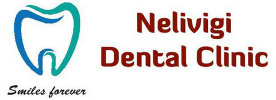Would you like to have a straighter smile? Many people put off orthodontic treatment because they don’t want to wear conspicuous braces. Invisalign is an alternative to traditional braces that can straighten your teeth discreetly. With Invisalign, you can get the smile you always wanted without braces.
The Invisalign system straightens your teeth using a series of clear plastic aligners that are almost invisible. It’s a popular choice among patients because the aligners are completely removable. You can eat, drink, brush, and floss as you normally would.
The aligners are designed using 3D computer modeling technology that can accurately project teeth movement. Each tray is precisely calibrated to fit snugly over your teeth as you proceed through the treatment plan.
Each aligner moves your teeth a small amount over a two-week period. The gradual movement means that Invisalign is more comfortable and generally less painful than traditional braces. At the end of the treatment process, you’ll have a beautiful, straight smile.
Invisalign gives you a great smile in less time. Traditional braces can lead to inadvertent movements that require additional corrections. Invisalign offers precise, controlled movement. The total treatment time will depend on the complexity of your case, but most patients can achieve the desired results in 6 months to 1 year.
With Invisalign, you don’t need as many dental appointments. Traditional braces need to be adjusted every 4 weeks. Invisalign allows you to receive several aligners at each appointment, so you only need to come in every 6 to 8 weeks.
Traditional braces trap food and plaque in hard to reach places. Since Invisalign trays can be completely removed, you can eat, brush, and floss with no problems.
Many patients would say that the best part of Invisalign is that the treatment isn’t noticeable. Most people won’t be able to tell that you’re using Invisalign unless you tell them.
If you’re interested in Invisalign, make an appointment with your dentist. In general, good candidates for Invisalign have healthy teeth and gums that are crooked or misaligned. Invisalign is a great option for many older teenagers and adults.
Children and young teenagers are typically not eligible for Invisalign because their mouth structures are still growing and changing. If you have an underbite or overbite, you may need to undergo other orthodontic treatments before starting Invisalign. Your dentist can help you determine which orthodontic treatment is right for you.
If your dentist has determined that you’re a good candidate for Invisalign, you can schedule your first appointment. Your dentist will take x-rays, photographs, and impressions of your teeth, which will be sent to Invisalign with specific instructions about how the teeth should be moved.
Invisalign scans the impressions of your teeth to make a 3D computer model. The model will be used to create your Invisalign plan from start to finish. This process usually takes a few weeks.
When your treatment plan is ready, Invisalign will send a video that walks you through the process and shows you how your teeth will look at the end of the treatment. Once you approve it, the trays will be fabricated.
Your dentist will contact you when the trays are ready, usually in 1 to 4 weeks. At that time, you can pick up the first set of aligners. After that, you’ll only need to come in for an appointment every 6 to 8 weeks.
Your teeth will naturally want to drift back into the original position. Your dentist will recommend a clear orthodontic retainer for the first 2 weeks.
Over time, the tissues around your teeth will strengthen, so you can eventually wear your retainer less frequently throughout the day. Patients typically need to wear a retainer every night for at least one year.
Alternatively, your dentist can install a lingual bar, which is a metal reinforcement placed behind your teeth. The lingual bar will prevent your teeth from moving. You must clean around your lingual bar every night to prevent plaque and gum disease. Smile retention is a lifelong commitment. Always follow the retention instructions provided by your dentist.
